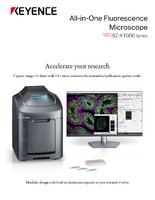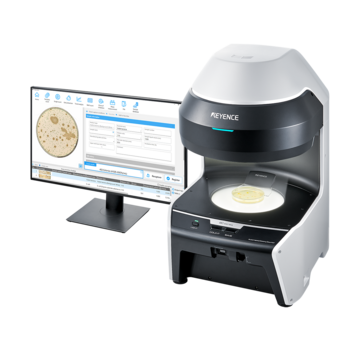Reducing Costs Through Automated Colony Counting: A Comprehensive Guide
In the world of microbiology, precise bacterial colony counting is vital for research, quality control, and clinical diagnostics. While manual counting methods are dependable, they are labor-intensive, time-consuming, and prone to errors. Enter automated colony counters—a solution that not only enhances accuracy and efficiency but also significantly reduces costs.
This article explains how using automated colony counting can greatly benefit your lab, saving time and money.
The Challenges of Manual Colony Counting
Manual colony counting involves visually examining agar plates, 3MTM PetrifilmTM Plates, and other media, and then tallying individual colonies by hand. This process presents several challenges:
- Time-Consuming: Counting colonies manually can take several minutes per plate, adding to hours for larger batches.
- Labor Intensive: Skilled technicians must perform the counts, diverting their expertise from other critical tasks.
- Human Error: Fatigue and subjective judgment can lead to inconsistent and inaccurate results.
- Data Management: Manually recording and analyzing data is inefficient and increases the risk of errors.
We’re here to provide you with more details.
Reach out today!

The Advantages of Automated Colony Counting
Automated colony counters address these challenges by offering a range of benefits that directly translate into cost savings:
Enhanced Speed and Efficiency
Automated colony counters can analyze and count colonies in as little as one second per plate. This fast processing helps labs manage larger volumes of samples in less time, increasing throughput and productivity. Automated systems can handle large volumes of samples without a proportional increase in labor costs, making it easier to scale operations as needed.
Improved Accuracy and Consistency
Advanced imaging technology and sophisticated algorithms ensure that automated colony counters provide precise and consistent results. By eliminating human error, these systems enhance the reliability of your data, which is crucial for reproducibility and compliance with regulatory standards and eliminates any recounting that would take up additional time.
Labor Cost Reduction
By automating the colony counting process, labs can free up valuable technician time. This allows skilled personnel to focus on more complex tasks that require human expertise. Additionally, there is less need for specialized training on manual counting methods and processes.
Cost-Effective Data Management
Automated systems often come with integrated software for data recording, analyzing, and reporting. This streamlines data management, reducing the time and effort required for manual documentation and minimizing the risk of errors. These systems can also integrate with Laboratory Information Management Systems (LIMS) to improve operations, reduce administrative overhead, and enhance overall efficiency.
Early Detection and Intervention
Automated colony counters can detect colonies as small as 50 microns, enabling earlier quantification of bacterial growth. Early detection allows for timely interventions, potentially reducing the duration and cost of experiments and improving overall outcomes, which can be crucial in fields like pharmaceuticals, food safety, and clinical diagnostics.
This early detection also helps to lower costs by optimizing the use of materials such as reagents and other consumables and eliminating the need for repeat testing.
Outsourcing Costs
Many labs send out their samples to 3rd party testing facilities to avoid having to invest in infrastructure for testing in-house (lab space, certifications, trained staff, etc.). While convenient to outsource for some, there can be a hefty cost to send out samples to be tested, both monetarily and in terms of expediency. For those that decide to bring colony counting in-house, results can be obtained much more quickly, with reporting and tracking done to your specific preferences, and the cost to test samples can be eliminated regardless of volume.
Discover more about this product.
Click here to book your demo.

Implementing Automated Colony Counting in Your Lab
Transitioning to automated colony counting involves an initial investment in equipment. However, the long-term cost savings and efficiency gains make it a worthwhile investment. Here are some steps to consider:
1. Assess Your Needs
Evaluate your lab’s specific requirements, including the volume of samples, types of organisms, required accuracy, and need for regulatory compliance and audit trails. This will help you choose the right automated colony counter that meets your needs.
2. Choose the Right System
Research and compare different automated colony counters on the market. Consider factors such as detection sensitivity, processing speed, ease of use, software capabilities, and customer support.
3. Training and Integration
Make sure your staff receives proper training to use the new system and seamlessly integrate it into your current workflows and systems. Most vendors offer comprehensive training and support to facilitate this transition.
4. Monitor and Evaluate
Regularly monitor the performance of the automated colony counter and evaluate its impact on your lab’s efficiency and cost savings. This will help you optimize its use and make informed decisions about future upgrades or additional features.
Curious about our pricing?
Click here to find out more.

Choose Automated Colony Counting to Reduce Costs
Automated colony counting represents a significant advancement in microbiology, offering substantial benefits in terms of speed, accuracy, and cost reduction. By adopting this technology, labs can streamline their operations, reduce labor costs, and improve the reliability of their data. As the demand for faster and more accurate results continues to grow, investing in automated colony counting systems is a strategic move that can provide a competitive edge and drive long-term success.
The Latest in Automated Colony Counting
When considering an automated colony counter, it’s best to choose one that can handle a variety of applications, especially as your testing needs may grow or change over time.
The BC-1000 Series Automated Colony Counter from KEYENCE utilizes the latest technology for ensuring rapid, accurate, and trackable enumeration of colony results on nearly any type of sample media (3MTM PetrifilmTM Plates/Neogen🄬 Petrifilm🄬 Plates, CompactDryTM plates, pads, dishes, etc.).
You can simply place a sample on the stage, click a button, and get an accurate colony count in one second on colonies as small as 50 microns. The data and an image of the sample can be saved and automatically output into a report format of your choosing and/or imported directly into your Laboratory Information Management System (LIMS).
Learn more about the BC-1000 Series Automated Colony Counter by downloading the catalog or contact us to see a demo of the equipment at your facility!
Contact us to learn more about how our advanced technology can help take your business to the next level.
Contact Us




